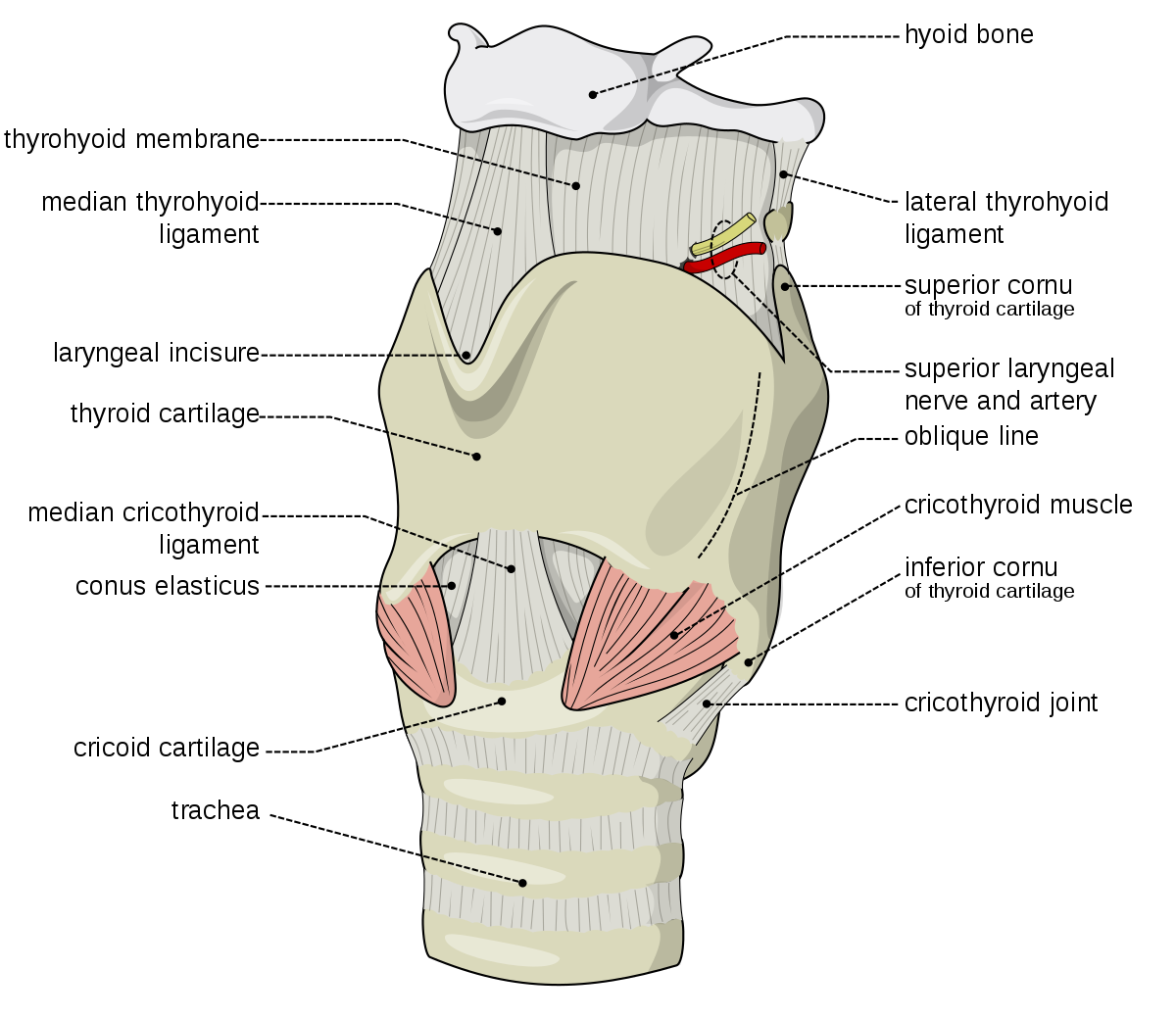You might not have ever thought about your dog's larynx. But if your older dog sounds a bit like a steam train when panting, we might need to take a look.
The larynx is better known as the voice box, but it does more than create sound. It is also protects the airways. The larynx opens when we breath, allowing air to flow into the lungs, and closes when we eat and drink so that we don't inhale food and liquid. It's also involved in coughing if some particle manages to sneak past.
Unfortunately, the nerves that control the larynx can become damaged, causing the larynx to be paralysed so that it stays shut or partially shut. This is a problem.
Let's take a closer look at laryngeal paralysis.
What is the larynx?
If anatomy bores the pants off you, skip this bit!
The larynx is complex structure in the throat, between the pharynx and the trachea. It's made up of six cartilages:
- thyroid cartilage – which is the Adam's apple in people
- cricoid cartilage
- epiglottis – the v shaped structure at the back of your throat that lifts when you swallow so food can't go down your airway
- arytenoid cartilage (pair) – which influence the position and tension of the vocal folds
- corniculate cartilage (pair)
- cuneiform cartilage (pair)
The larynx also has lots of muscles. The main ones we're interested in are the intrinsic muscles. Of these there are two types: those involved in making noise and those involved in breathing. The noise muscles (adductors) close the vocal folds so air moving through them makes sound (barking, whining, growling). The breathing muscles (abductors) open the vocal folds when we take a breath in and allow the air to flow down into the lungs.
The larynx is innervated by:
- the vagus nerve
- the superior laryngeal nerve
- the recurrent laryngeal nerve
Looking at the larynx from under the neck with the dog's nose pointing up
What is laryngeal paralysis?
Laryngeal paralysis happens when the breathing muscles (the abductors) don't work properly. Instead of the vocal folds being pulled open by the muscles during an in breath, they stay closed and floppy. So when your dog needs to take a deep breath, he can't - his airway is partially obstructed by his own vocal folds.
This obstruction causes two big problems:
- anxiety – because he can't get enough air in, he may panic, which worsens the situation because this causes more rapid breathing (panting) and more distress
- overheating – without an open airway your dog can't pant effectively and get rid of heat. Getting hotter also worsens the situation as the hotter he gets, the harder he'll try to pant, which can cause the throat to swell
In some cases this situation can tail spin into a respiratory crisis and even death.
Before your dog gets to the crisis phase of this condition, there is usually a fairly long history (sometimes years) of symptoms such as:
- panting a lot
- becoming tired easily on exercise
- voice change (quieter or harsher)
- loud breathing (called stridor)
- gasping/difficulty breathing
- coughing when/after drinking or eating
- gagging
The changes can be so gradual that you don't notice them, or you put them down to old age. But the earlier you notice the signs, the better able we are to avoid the respiratory crisis situation.
What causes laryngeal paralysis?
Laryngeal paralysis is generally considered a neurological condition, that is, it's due to a nerve problem. There's evidence that it might be just one of the most visible aspects of widespread neurological degeneration, and so some people now call it geriatric onset laryngeal paralysis polyneuropathy (GOLPP).
What causes the nerve problem is unknown.
Who gets laryngeal paralysis?
Laryngeal paralysis usually occurs in older, larger breed dogs. The most commonly affected breed is the good old Labrador.
How is laryngeal paralysis diagnosed?
Laryngeal paralysis is one of those conditions that we 'hear' while the patient is in the waiting room.
Saying that, to really diagnose laryngeal paralysis, we need to examine the larynx under sedation. We need the level of sedation to be heavy enough for your dog to allow us to open his mouth wide enough to look at the larynx (typically with an endoscope) and light enough for normal breathing to be occurring.
In the normal dog, the vocal folds/arytenoid cartilages appear to open and close with breathing. In dogs with laryngeal paralysis, the folds just sit the limply across the opening. Sometimes one side will be affected, sometimes both sides are paralysed.
If your dog comes to us during a respiratory crisis, we tend to do the diagnostic test just before the necessary treatment of passing an endotracheal tube (breathing tube) into the windpipe.
Examining the larynx is also important for ruling out other causes of the similar signs such as tumours in the back of the throat.
How is laryngeal paralysis treated?
We don't have medications that effectively reverse the paralysis.
What we have are:
- lifestyle modifications to help prevent a crisis – the main ones being keeping your dog cool and limiting/changing exercise – both of which are done to keep breathing calm and avoid panting
- surgery – which aims to permanently relieve the airway obstruction while trying to preserve the protective function of the larynx
If your dog has laryngeal paralysis, it's a good idea to chat to us about an individual management plan and what to do if a crisis occurs.





